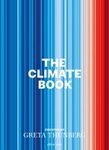Textbook
By: Chester F Ropelewski(Author), Phillip A Arkin(Author), Antonio J Busalacchi, Jr.(Foreword By)
374 pages, 38 b/w illustrations, 14 maps
![Climate Analysis Climate Analysis]()
Click to have a closer look
About this book
Contents
Customer reviews
Biography
Related titles
About this book
Sensational images and stories about variations in Earth's climate and their impacts on society are pervasive in the media. The scientific basis for these stories is often not understood by the general public, nor even by those with a scientific background in fields other than climate science. Climate Analysis is a comprehensive resource that will enable the reader to understand and appreciate the significance of the flood of climate information. It is an excellent non-mathematical resource for learning the fundamentals of climate analysis, as well as a reference for non-climate experts that need to use climate information and data. The focus is on the basics of the climate system, how climate is observed and how the observations are transformed into datasets useful for monitoring the climate. Each chapter contains Discussion Questions. This is an invaluable textbook on climate analysis for advanced students, and a reference textbook for researchers and practitioners.
Contents
Foreword by Antonio J. Busalacchi, Jr.
Preface
List of Abbreviations and Acronyms
1. Earth's Climate System
2. Climate Analysis: Goals and Methods
3. Climate Analysis: Atmospheric Instruments, Observations, and Datasets
4. Climate Variability
5. Climate Change
6. Temperature: Building Climate Datasets
7. Precipitation: Combining In-Situ and Remotely-Sensed Observations in Constructing Climate Datasets
8. Ocean Climate Datasets
9. Cryosphere
10. Land Component of the Climate System
11. Climate Models as Information Sources and Analysis Tools
12. Operational Climate Monitoring and Prediction
Appendix A. A Short Guide to Some Statistics Used in Climate Analysis
Appendix B. Vorticity/Divergence, Stream Function/Velocity Potential
Appendix C. Preliminary Examination of the Data
Appendix D. Components of the Mean Water Budget
Glossary
References
Index.
Customer Reviews
Biography
Chester F. Ropelewski has 50 years of experience in climate analysis, including weather forecasting, development of climate datasets and real-time monitoring systems, research in atmospheric turbulence, tropical boundary layers, hurricanes, the North American monsoon, sea ice, snow cover, climate variability, El Niño/Southern Oscillation (ENSO), Quasi-Biennial Oscillation, hydrologic cycle, and droughts. He was awarded the Norbert Gerbier-Mumm Award from the World Meteorological Organization in 1990, and elected a Fellow of the American Meteorological Society in 2001. He is the author of over 100 research papers, book chapters and reports. He was Chief of the Analysis Branch of the Climate Prediction Center of the National Oceanic and Atmospheric Administration (NOAA); Director of the Climate Monitoring section of the International Research Institute for Climate and Society at Columbia University; and a Senior Policy Analyst and Advisor of the The Earth Institute, Columbia University.
Phillip A. Arkin has over 40 years of experience as an innovative research scientist and leader at the National Oceanic and Atmospheric Administration (NOAA); Columbia University; and the University of Maryland, where he currently works. He has played a leading role in shaping the use of satellite data to estimate precipitation for climate studies and created the first system to use weather model analyses for climate monitoring and research. He has initiated and led several international research projects and has mentored a diverse collection of young scientists who have gone on to fruitful careers in climate science. He has published nearly 100 papers in the weather and climate literature, most of them focused on the climate datasets and their applications that are the subject of this book. He is Fellow of the American Meteorological Society (2000), recipient of the Hugh Robert Mill Award from the Royal Meteorology Society (2004), and a Distinguished Alumnus of the University of Maryland.
Textbook
By: Chester F Ropelewski(Author), Phillip A Arkin(Author), Antonio J Busalacchi, Jr.(Foreword By)
374 pages, 38 b/w illustrations, 14 maps



































